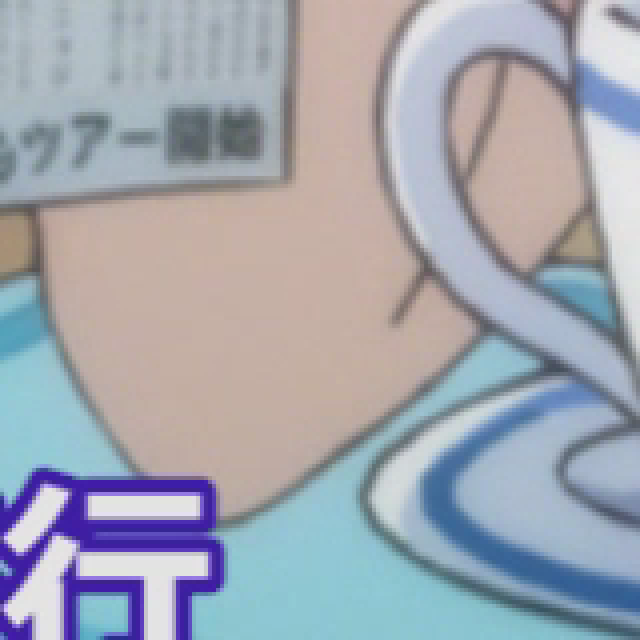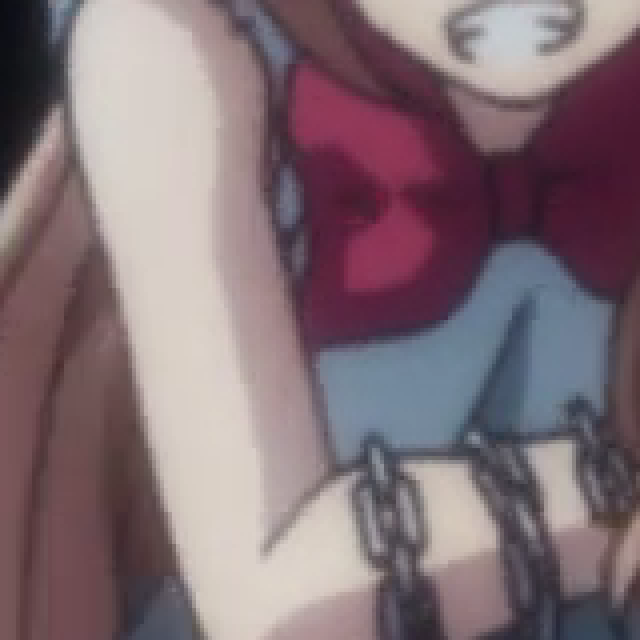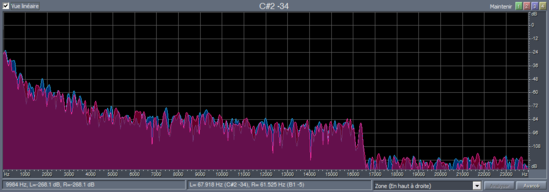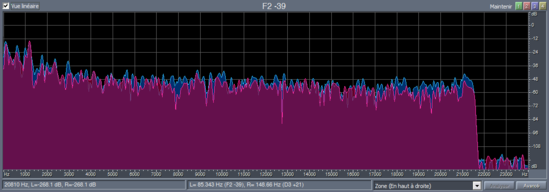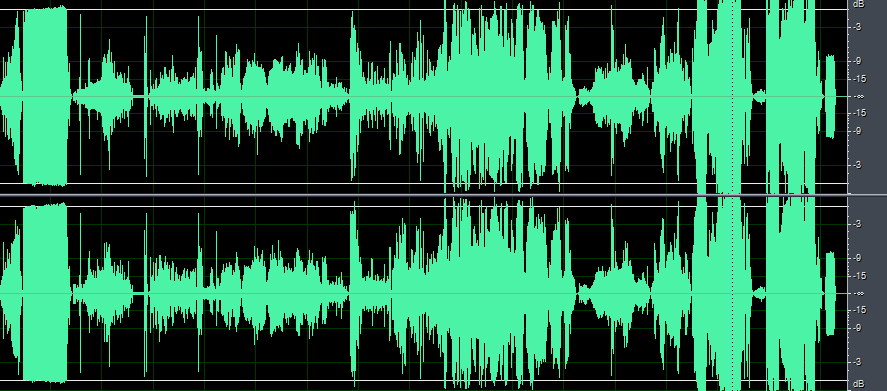Edit, 8th December 2017: Before you wonder how I could come to that conclusion when Kyoto Fantasy Troupe‘s attempt was at clear advantage, you have to put things in perspective. At the time, I mistakenly compared this episode with Manpuku‘s whole series where I should have compared it with the current arc they were working on in the same period. I surely have to reconsider that conclusion. I may write an update at the end later if not lazy.
Edit, 22nd December 2023: I feel really sorry if that article is now ending as a total mess as my thoughts change over time. But I really want to be clear that what I write doesn’t have the vocation to be set into stone and I want to keep my readers updated with my thoughts changing, so I don’t look like an idiot. Someone reconsidering their thoughts is a good sign about the state of their mental health. It means they’re open-minded and not mindlessly stubborn.
The Sealed Esoteric History -moon- (秘封活動記録-月-) review, final part (personal verdict and some thoughts)
Really good days for both animation and Touhou lovers
We are in a point of time that has never been so good if you’re looking for Touhou animation. We now have three series which all have their own imprint (on top of them you can add Sound Holic’s PVDs and Touhou M-1 Grand Prix and some other less major efforts). Let’s detail what I don’t like with A Summer Day’s Dream. The overall tone, the pet-like characters, all that laziness and shortcuts to fill in the time and space along with the really slow pace and completely silly plots. I can’t understand how can some of you consider it as “better”. It sure has entertainment value, with the really lovely voice acting that drives most of its tone (I really like what some seiyuu do to the characters by improvising a bit) but some of the voices are just… no
(edit, 22/12/2023: Yeah, going out of my way striking out my previous text this time as some of you may have understood by now reading my other edits that my previous speech about Musou Kakyou – A Summer’s Day Dream is now outdated; even better, I finally bought episode 2.5 from Maikaze’s BOOTH store recently, in order to complete my collection for good, and man… what the hell was I thinking at the time? Clearly one of the most interesting episodes as it acts as some sort of transition between episodes 2 and 3, the battle scene between Reisen and Youmu is fabulous and I really liked the voice work; being short also definitely helped me in enjoying it and while it remains weak story-wise, there are some elements here and there which single-handedly makes it much better written than any Fantasy Kaleidoscope episode)
(Edit, 18/09/2024: well, it looks like I was able to find my edit back thanks to Google’s cache still available. As my host suffered a huge database incident recently and my backups being too old, I feared I wouldn’t be able to retrieve all my recent edits. Anyhow, to add to what I’ve previously written before, I actually prefer how some characters are portrayed in Musou Kakyou now, especially Marisa, and most of all, I think it now really shines when it comes to showing off its true animation segments, see the battle scenes in episode 2.5 and mostly the one in episode 4, the latter being a 24k goldmine all by itself)
Fantasy Kaleidoscope set a new mark or standard for Touhou animation. Allying efficiency with rapidity and unmatched care in both art, animation and sound departments. However, its target is clearly pure entertainment and a cartooney, light tone to appeal the highest number of potential viewers. It also allows itself some obvious liberties by incorporating questionable elements and not really focussing enough on storytelling. They are, at Manpuku Jinja, in a more “let’s just enjoy ourselves as that’s what really counts, as we’re over the top anyway” approach than others. Maybe they’re right after all. What I like the most is the audacity of not wanting to include voice acting. You would not see that in traditional and commercial TV animation. Ever! Yet, not only Touhou allows you to transcend the rules seen in the industry and art schools but it can also prove it can work if done more or less properly. In fact, Fantasy Kaleidoscope is a concentrate of really well thought and smart compromises when thinking about it and stepping back. Also… yes, I myself do prefer Touhou derivative works (and some other fan productions) to be unvoiced. That’s an aesthetic and personal preference (I also find characters to look a lot cuter that way, especially considering it’s an all female cast, don’t ask me why).
Now our lovely OVA from Kyoto Fantasy Troupe. Truly one of the nicest surprises of 2016. I really like how it tries to compensates for Fantasy Kaleidoscope caveats by focusing on storytelling and going easy with gags, grimaces and fan service. For a first attempt, I consider it as truly astounding. Gone are the days of that dodgy attempt Sound Holic offered us in late 2007. Some awkwardness is inevitable but I think it coped very well.
Now, my personal verdict
The moment everybody is waiting for. Do I consider this as better than Fantasy Kaleidoscope? The answer I’m going to give may surprise you or make you jump. I’m sorry, I just can’t distance myself from my usual anti-conformism.
Well, as good and neat Kyoto Fantasy Troupe’s anime is, I still think Fantasy Kaleidoscope still have its word. The lighter and more accessible tone, along with better mastered art clearly act in its favour. So, my folks, no. It is not superior to Fantasy Kaleidoscope, even with its own questionable artistic choices (mainly for Episode 6, as I consider it way too cartooney). Artistic choices and elements that you choose to include don’t make everything. Don’t forget we’re talking about Touhou derivative works, not your average TV programme that a network purchased to be aired on a given time slot. It’s all about alchemy. An alchemy that works regardless of what you put and how you’re doing it. I guess it has something to do with the soul that is blown into it. I really wish some fine/amateur animators and MMDers could take that into consideration rather than following crowds and trends. Maybe it’s just a question of open-mindedness… or I’m just going too far with my reflection (we’re just talking about a small self-product OVA).
Edit, January 27th, 2019: Some of you reading this might be wondering what the hell I smoked when I wrote this article. It was clear at the time that Kyoto Fantasy Troupe was the big winner, especially during that time where Manpuku Jinja was focussing on the flower incident arc, which was finally released on Bluray along with the Giant Youkai one during summer Comiket in 2018. It was clear that the Chinese circle did show huge storytelling savoir-faire where Manpuku had trouble find the path to follow, achieving a rather mediocre blend between nice artwork, grimaces and light-mood scenes. A Sealed Esoteric History was clearly a much more interesting watch at the time, with or without voices (voiced version released in April 2016). But it doesn’t make Fantasy Kaleidoscope that bad. The lighter mood brought by episodes 5 to 7 can find its audience in the end, especially those who preferred the approach used by Maikaze over strict retelling of the games without much input. And, as you can guess, we’ve come a long way since and Manpuku finally found its path during the Imperishable Night arc and episodes are finally offering a good blend of story, seriousness, personal input and light mood which make this arc much worthwhile than what they did before (edit, 22/12/2023: Or not, I now think they kind of screwed up for episodes after 8 by having a curious sense of priorities, dodging difficulties with lots of anticlimaxes and off-screen battles, and notably during the – at least to my eyes – unnecessary Trial Of Guts arc, the Mountain Of Faith arc faring slightly better but that was too late, the vast majority of watchers already quit the series). Also, references to fanon are introduced in a more subtle manner. Episodes during this arc feel less and less out of place. In the meantime, Kyoto Fantasy Troupe still didn’t go beyond episode 2, and that’s why I still think Fantasy Kaleidoscope still has its word, even though less and less (sensible) people seems interested in it.
In any ways, I heartily recommend it, especially if you’re not fan of the cartooney aspect of Fantasy Kaleidoscope and want something more “mature”, less childish to watch, something that can bring actual reflection rather than amusement. The gorgeous art is really what strikes the most in it.
Okay, a final thought…
Well, one of the anime’s weakness doesn’t reside in the sold product actually but rather in the circle’s own communication strategy. They clearly have lot of work to do on that domain. If you compare Kyoto Fantasy Troupe’s blog to Manpuku Jinja’s one, differences are striking. It looks like KFT doesn’t like giving too much info or leaking too much material. The problem is that it prevents the future viewer of being aware of how the final product will look like. Sure we had come sketches early in development, 3 trailers and some animated GIFs later but that’s all we had, really. It looks like the circle is a bit too discreet in my taste. They clearly need to work on their advertising.
Okay, I think I’m done now. I hope my review wasn’t too long or boring. If I actually made you want to buy this, it means that I did my job well and that the circle could take inspiration from it and think about what they should say from what they shouldn’t. Thank you for your reading. I really wish the circle good luck for the future.




